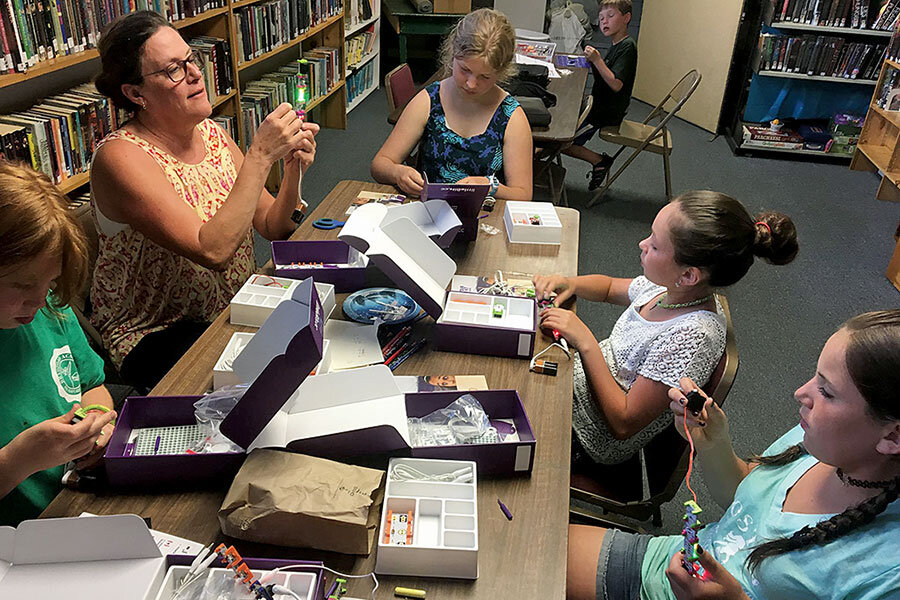Vermont libraries provide community, not just books
Loading...
From Pillow Fort Night to recording local history, Vermont’s rural libraries are at the forefront of preserving a sense of community, both past and present.
In Canaan, Vt., a small town bordering Canada, a group of children met NASA robotics mechanical engineer Christine Fuller, thanks to a live video feed set up by the Alice M. Ward Memorial Library for its First Lego League robotics group for Grades 3 to 6. They learned about the coding and research that goes into making NASA’s space robots, seeing a real-life application of what they’re learning. As part of an oral history project, students were able to help preserve local history by interviewing former workers from the Ethan Allen furniture factory, which massively cut back its workforce in Canaan in 2009.
In an era when memberships in social clubs and church attendance are down, and critics say social media appears to be fracturing rather than knitting society together, libraries are stepping in as so-called third places where people can meet and socialize.
“We are a gathering place,” says Lucinda Walker, director of the Norwich Public Library in Norwich, Vt. “We’re the living room in people’s lives.”
In March, her library literally filled that role, with families, many of the kids in pajamas, building pillow forts in different parts of the library as part of a new event.
“Our family just loves the fact that it’s such a simple place to gather, see your friends and your neighbors,” says Kathryn Kelly, whose three children have grown up using the library.
The “living room” concept is an about-face from decades past, Ms. Walker adds.
“Years ago, people would come into the library, they’d get what they’d need, and they would leave. Very transactional,” Walker says. “Now people use the library for so many different reasons, and they stay.”
Today the uses range from checking email or having a meeting to learning a new language or attending an event. The Norwich library also lends a huge variety of nonbook items from its “library of things,” ranging from kitchenware to fitness equipment and outdoor games. There’s even a food mill that patrons have used to make applesauce or do canning.
“It’s a great mixing place,” says Kevin Unrath, director at the Pierson Library in Shelburne, a town near Burlington, Vt., along the shores of Lake Champlain. People of different backgrounds, incomes, and ages, “they all come into the library,” Mr. Unrath says.
With the disappearance of local newspapers in many communities, as well as a digital divide in rural areas that needs to be bridged, librarians are doing everything from running a weekly newsletter to making sure everyone can have access to the internet.
“A lot of families come here to do their taxes, apply to jobs, file for unemployment, do research, or adult education,” says Gail Trede, co-director at the Bradford Public Library in Bradford, Vt. Many of those activities require internet service – a convenience not everyone can afford at home.
People often park outside the Bradford library after hours to pick up the internet connection; the same is seen at the library in Canaan.
“We have people outside the library constantly using our Wi-Fi, because they don’t have it at home,” says Craig Varley, director of the library in Canaan.
In Bradford, the popular Bradford Young Makers Club, sponsored by the library, invites 11- to 14-year-olds to use a variety of technological and educational tools to get creative – while also honing skills that may boost future careers. Adult mentors volunteer for the program, which fosters cross-generational relationships throughout the community.
“It’s so much more than books,” says Ms. Trede. “It’s all about the person sitting at the desk. These are our people; this is our community. We look for a need, and we try to fill it.”







